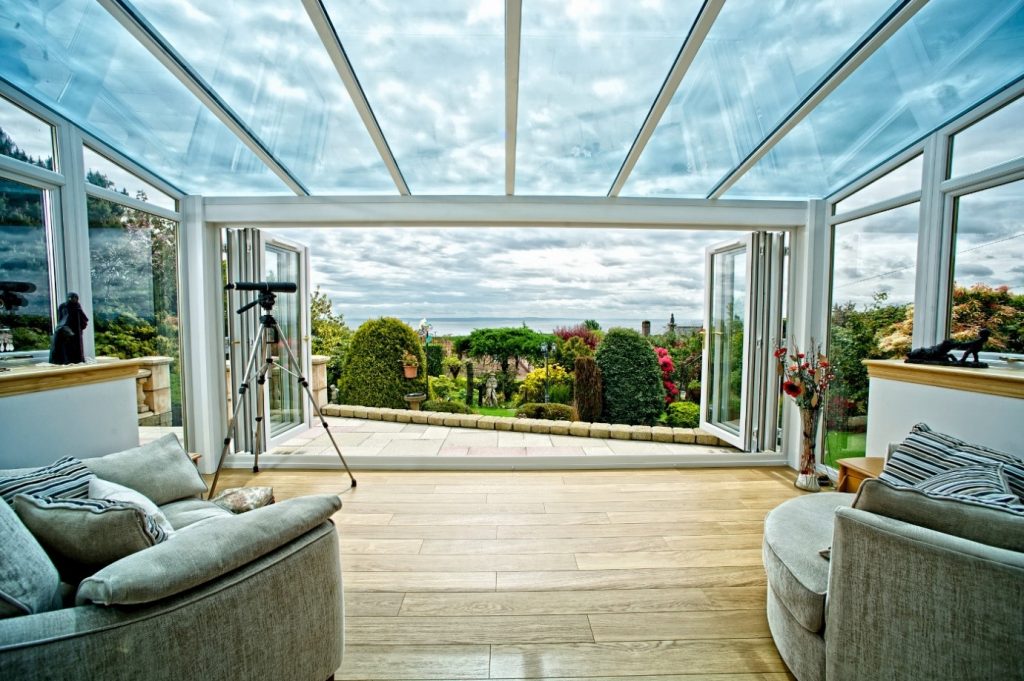
It has been a dream a long time in the making but, at last, you have the conservatory you have always wanted. Designed by you, it is the ideal space for your home.
It is the place you intend to relax, enjoy the view, the garden and the swathe of natural light pouring in.
There is just one problem – you find it too cold once summer has passed to enjoy the space. Thus, the dream conservatory is only a reality in the few short summer months. The rest of the time, it is simply too chilly to enjoy.
A conservatory by its very definition is made from glass. With energy-efficient glass and super insulation in the floor walls, it can be a fantastic place to relax but it is a space that can lose heat eight times faster than the rest of your home.
Using blinds, shutting vents and windows before dusk all help to keep the conservatory warmer. But you do need a source of heat, so what are the options?
Electric Radiators
There has been a steady increase in the popularity of electric radiators in recent years, especially for use in conservatories.
- They are a fuss-free option for the conservatory, proving to be a convenient choice as in many cases, it is a case of plug in for heat.
- Available in a range of shapes, sizes and styles, they are a low-impact addition to the space.
- Newer models are efficient releasing all the energy are heat and they heat up and cool down quickly too.
But, electricity is expensive and running the radiators over a long period can soon add up.
Underfloor Heating
As far as heating your home goes, you will be hard-pushed to find a more efficient heating system than underfloor heating, especially the wet or water types.
Conservatory underfloor heating has many distinct benefits;
- Hidden – there are not radiators on walls taking up valuable space, as everything is neatly hidden away beneath the floor.
- Even heating – underfloor heating heats the entire floor, so there are no cold spots or hot spots, as you get with radiators.
- Low-level heat – underfloor heating, especially the wet underfloor heating system, works at a much lower temperature therefore, you don’t have huge variations in heat. In other words, the conservatory will not feel ‘chilly’.
- Efficient – it is an efficient heating system, more so when you have sophisticated control over it via a smart thermostat.
- Residual heat – with the right floor covering, your conservatory will not only be toasty warm but when the system is lowered, the heat remains in the room for some time as the floor hangs on to heat.
- Floor coverings – underfloor heating kits are now available to suit a range of floor coverings, including carpet if you are laying carpet in a conservatory or orangery. In most cases, a hard flooring solution is used hence tiles, concrete floors and even linoleum and laminate can now be used with underfloor heating.
Air Conditioning
We associate air conditioning with keeping spaces cool but, the same technology can be used to heat a space too.
The heat pump in the unit can be ‘reversed’, taking the warmth out of the outside air and using it within the conservatory space. In the height of summer when the conservatory can be too warm, it can be used as a cooling unit.
This dual-purpose function makes it a good choice. Check out heat source pumps for more information.
Extend the Central Heating System
It can be temporarily disruptive extending the existing central heating system, but adding a radiator or two to your conservatory can be an effective means of heating the space.
Available in a range of styles, including a low-profile type, radiators in the conservatory don’t always need to large and cumbersome additions. Using the central heating via zones and a smart thermostat gives you more control over the whole heating system.
Which Heating System is Best?
It depends on many factors;
- Your preference – many people assume that extending the current central heating system makes the most sense but with underfloor heating, it can work alongside your current heating system and feed off the same combi-boiler.
- Your budget – the assumption is that fitting a new heating system like underfloor heating will be costly. But underfloor heating is fitted at the time that a conservatory is built. Everything is included in the kit and a water system simply connects to your boiler. You will need a gas engineer to do this and an electrician to fit the thermostat.
